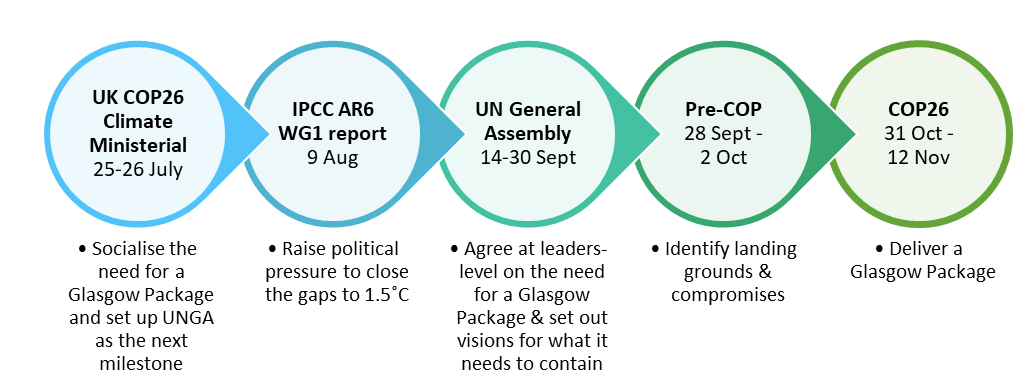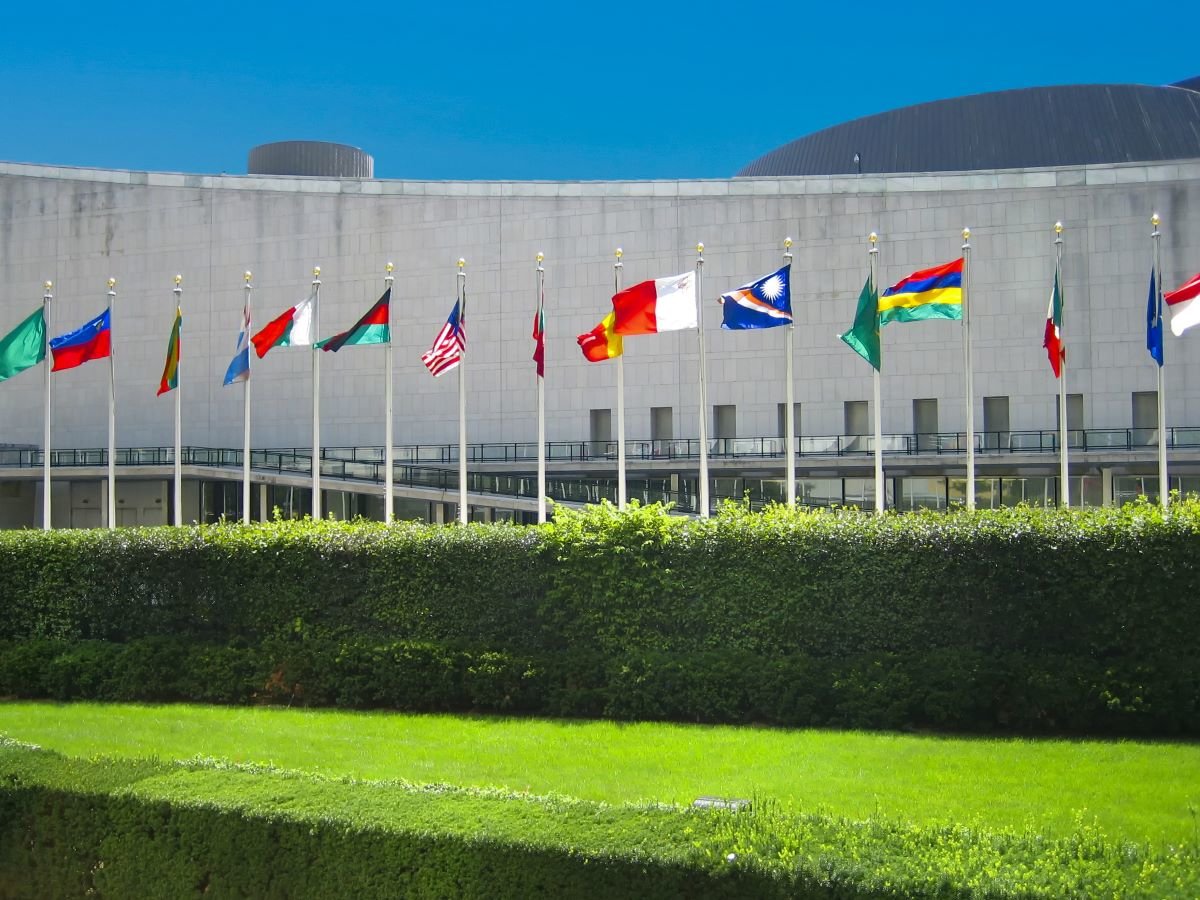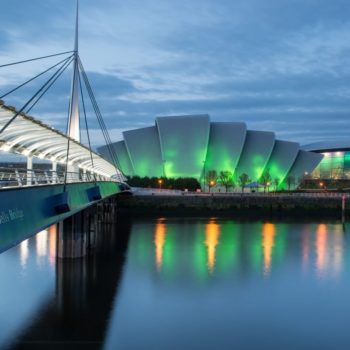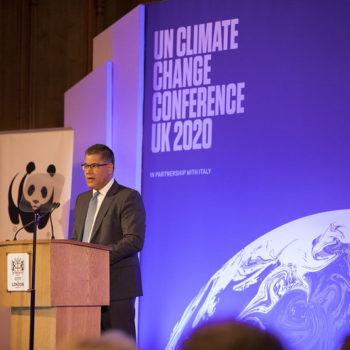What does success at COP26 look like, and how can we get there? In Part 1 of this blog to mark 100 days to go until COP26, we outlined what a ‘Glasgow Package’ to keep 1.5C alive could look like. In Part 2, we examine the path for landing this between now and COP26.
Building a Glasgow Package isn’t the task of any one climate actor. Everyone involved in COP26 – the Presidency, parties, campaigners, civil society observers, the public – has a role to play in defining what the package could look like. All of them will have their own perspectives on what specific components are necessary for an ambitious outcome.
Nonetheless, without a coherent message on the task for COP26 it will be challenging to create expectations around the need for a comprehensive package of outcomes, keeping 1.5˚C alive – a shared, common goal. The package outlined in the first part of this blog aims to spark the beginning of a healthy, necessary and overdue debate about what success at COP26 looks like.
This conversation needs to start now. In just a few days’ time, the UK will convene about 40 climate ministers in London to engage on this very topic and has invited written inputs from Parties and Observer Constituencies. This meeting and its written inputs (which will be posted online) are crucial in setting the expectation around the need for a Glasgow Package. It is also an important opportunity to set out the roadmap for landing a Package. The UN General Assembly is the critical leaders-level moment for establishing this as the task at COP26.

The first part of the IPCC’s Sixth Assessment report next month will help build political pressure on the need for COP26 to close the gaps to 1.5˚C. At the same time as building consensus for a Glasgow Package and what it should contain, it is also necessary to construct the politics that can land it at COP26.
- Climate vulnerable countries will be natural champions of a Glasgow Package, and will need to be at the heart of any coalition for it. Delivering their priorities – action on climate finance, adaptation and loss & damage, addressing vaccine inequity and shrinking fiscal space due to COVID-19 – is key to build the political alliances necessary.
- Many countries – the US, EU and China foremost – will be key dealmakers of a Glasgow Package. They are unlikely in themselves to be vocal advocates, but are critical to shift towards a consensus outcome, filling the political space created by champions. In this regard, concerted and sustained pressure to shift ambition in the G20 is essential to have enough political support around the necessity of 1.5˚C.
- As always, a few countries are likely to oppose anything that seeks to accelerate climate action. Isolating the likes of Australia, Brazil and Russia through strong and broad coalitions for high ambition is the only way to handle potential blockers.
There are barely 100 days to go until COP26. The summit will be the critical judgment moment for whether governments are serious about meeting the goals of the Paris Agreement. A Glasgow Package at COP26 to keep 1.5˚C alive would show the world that they are.



